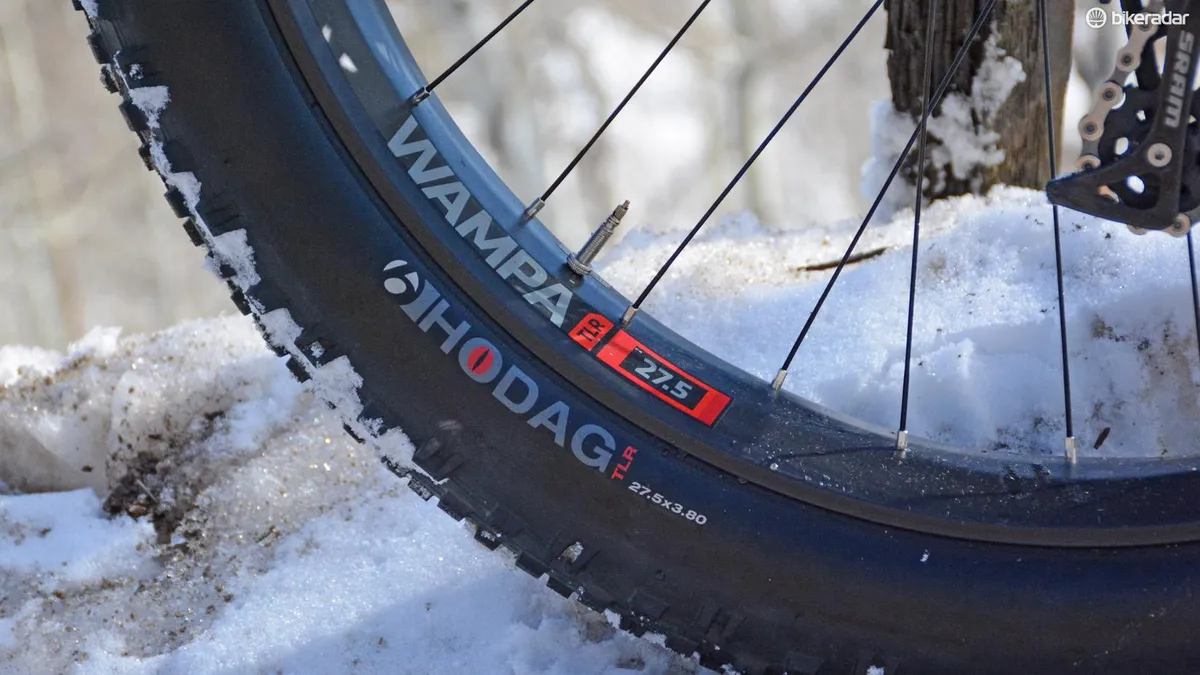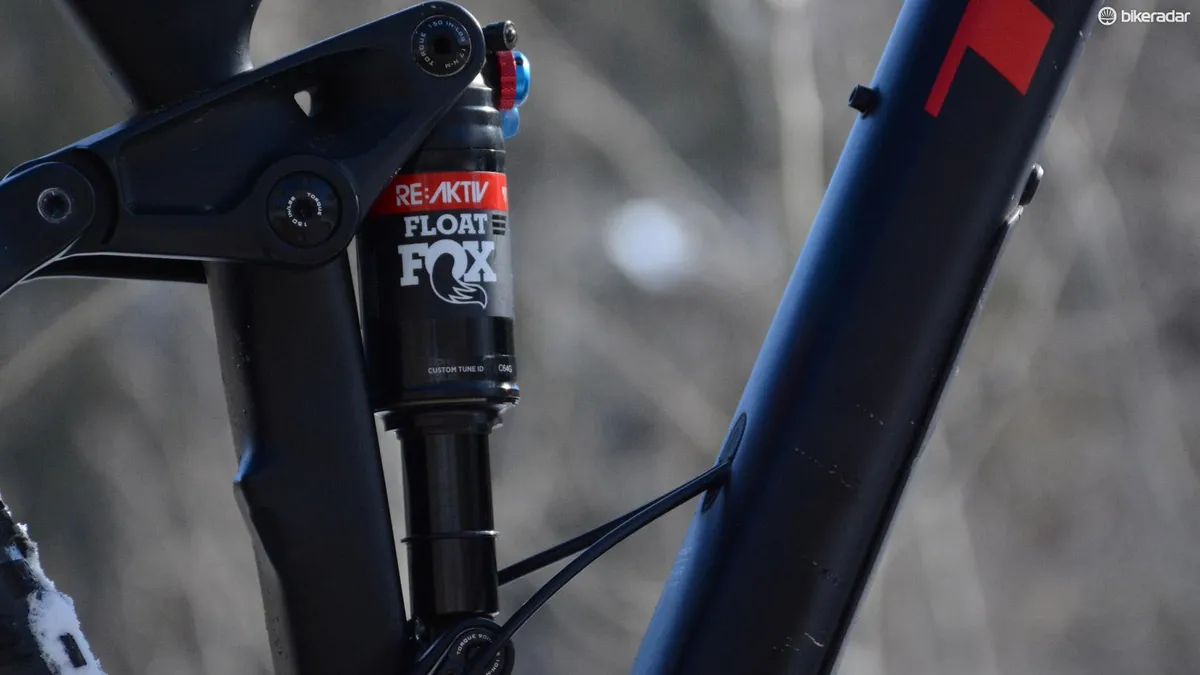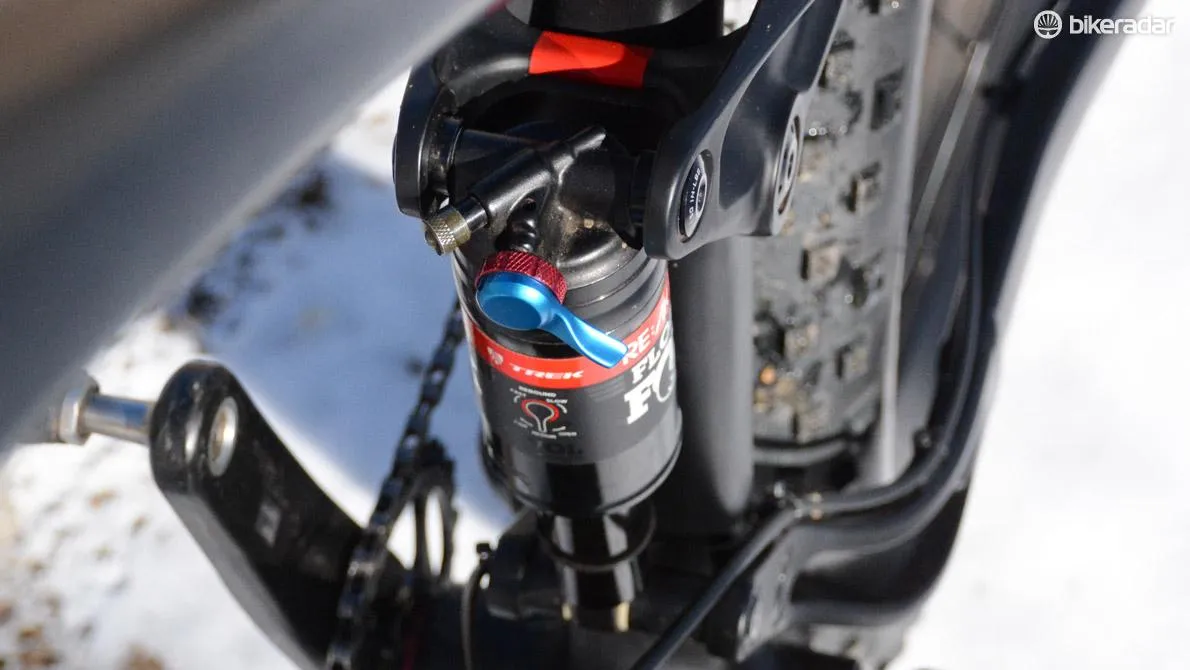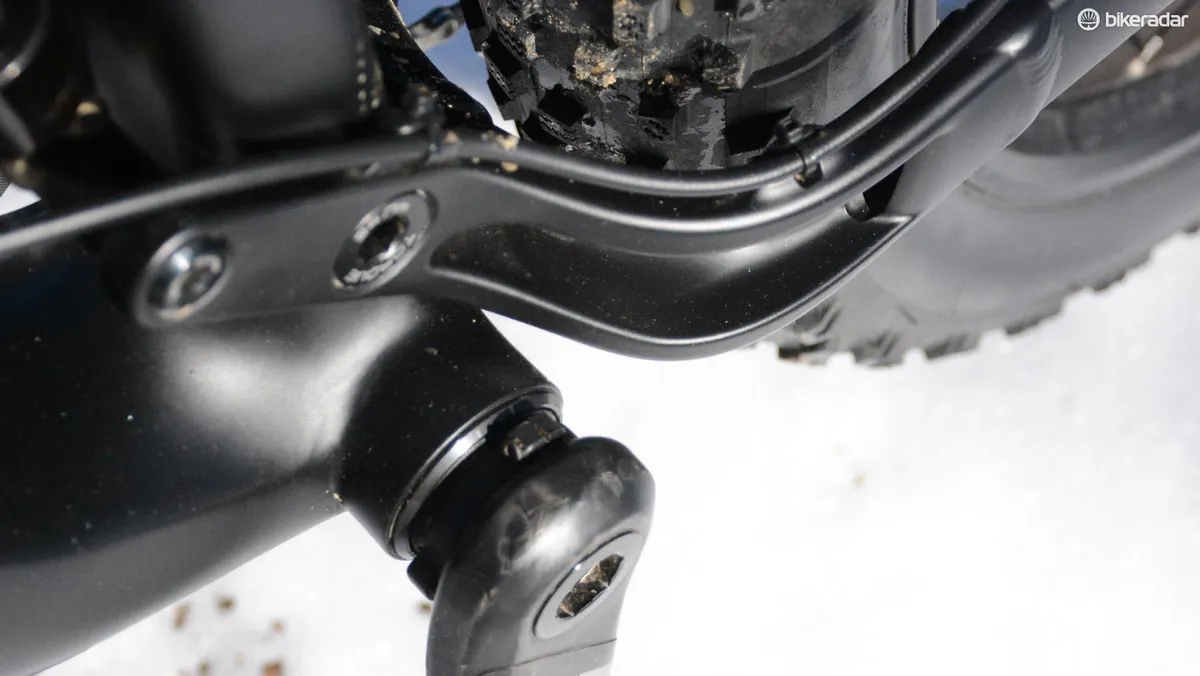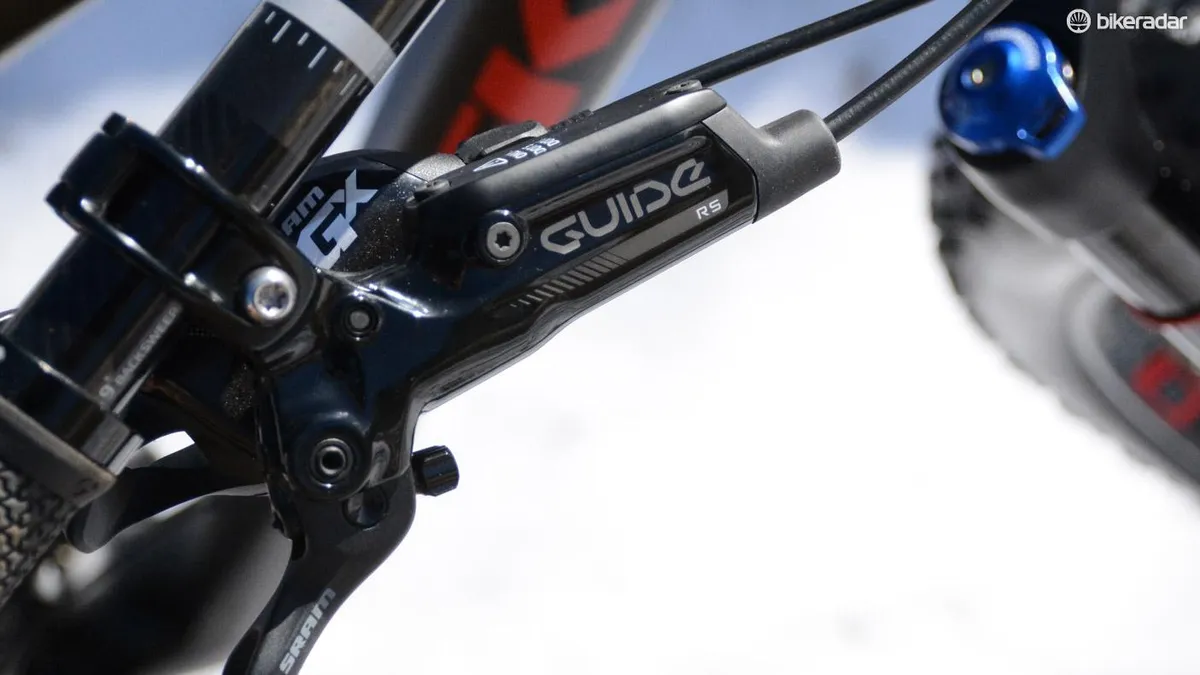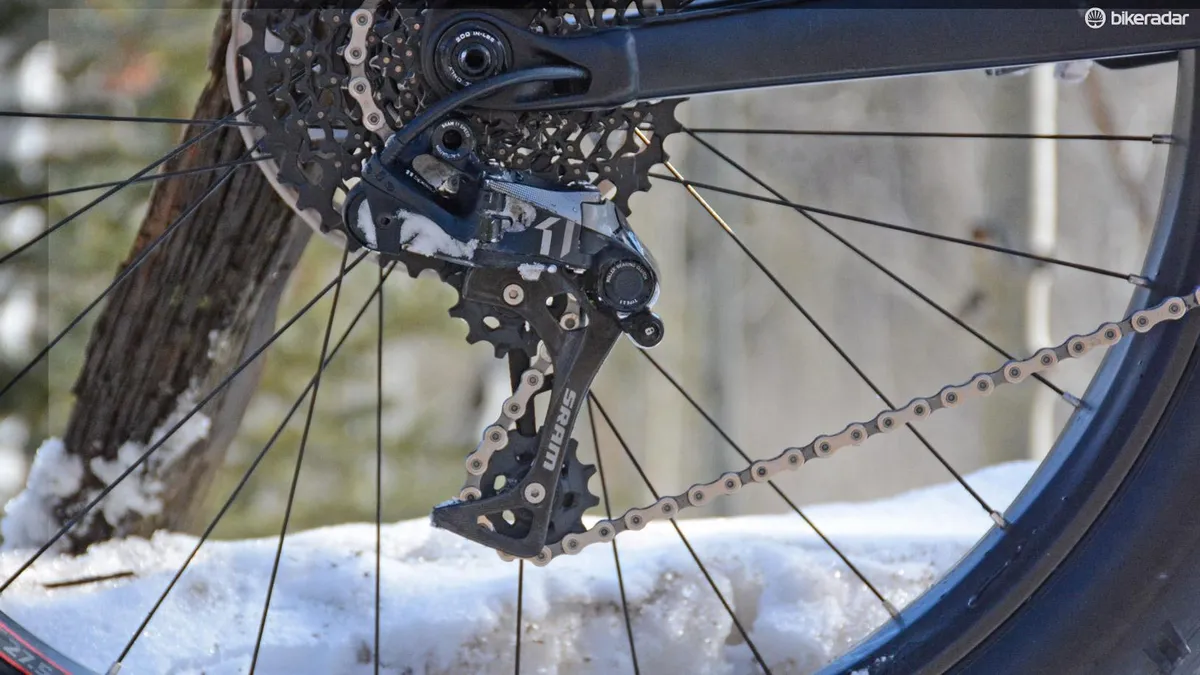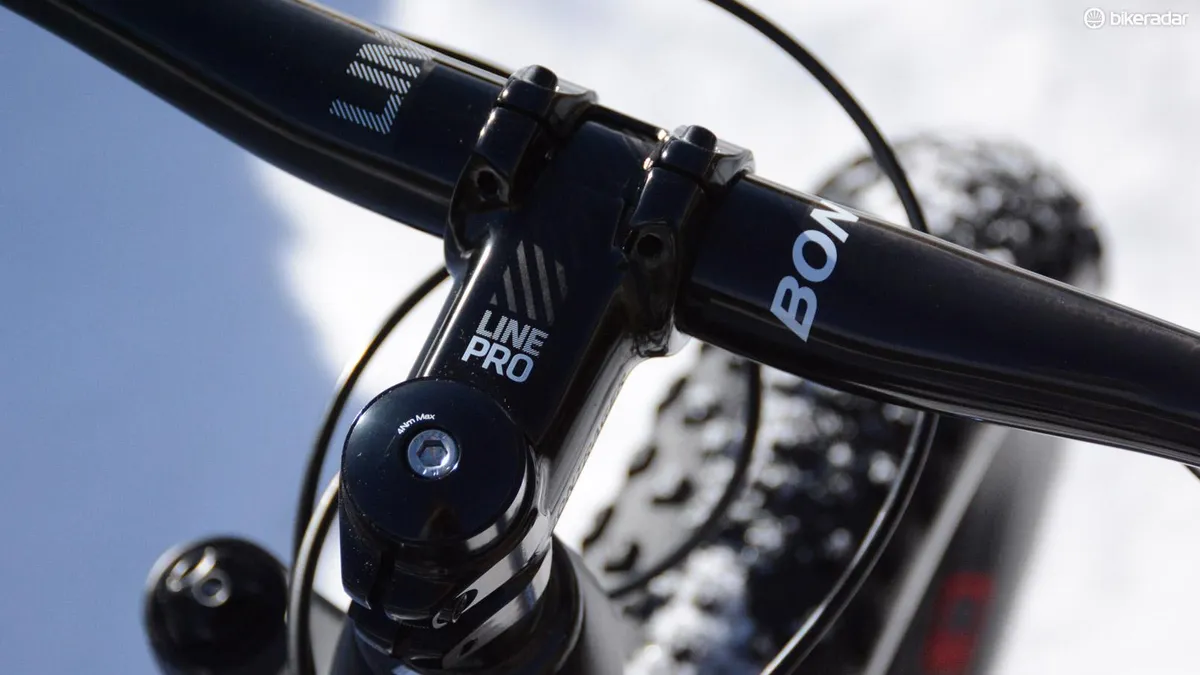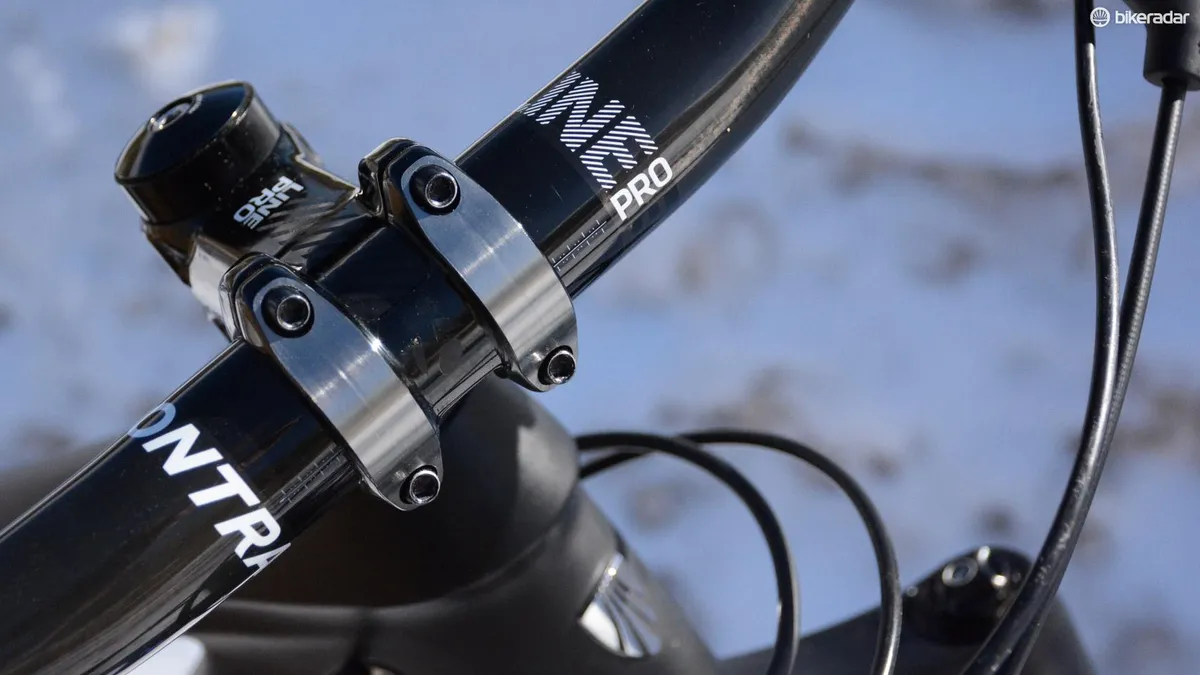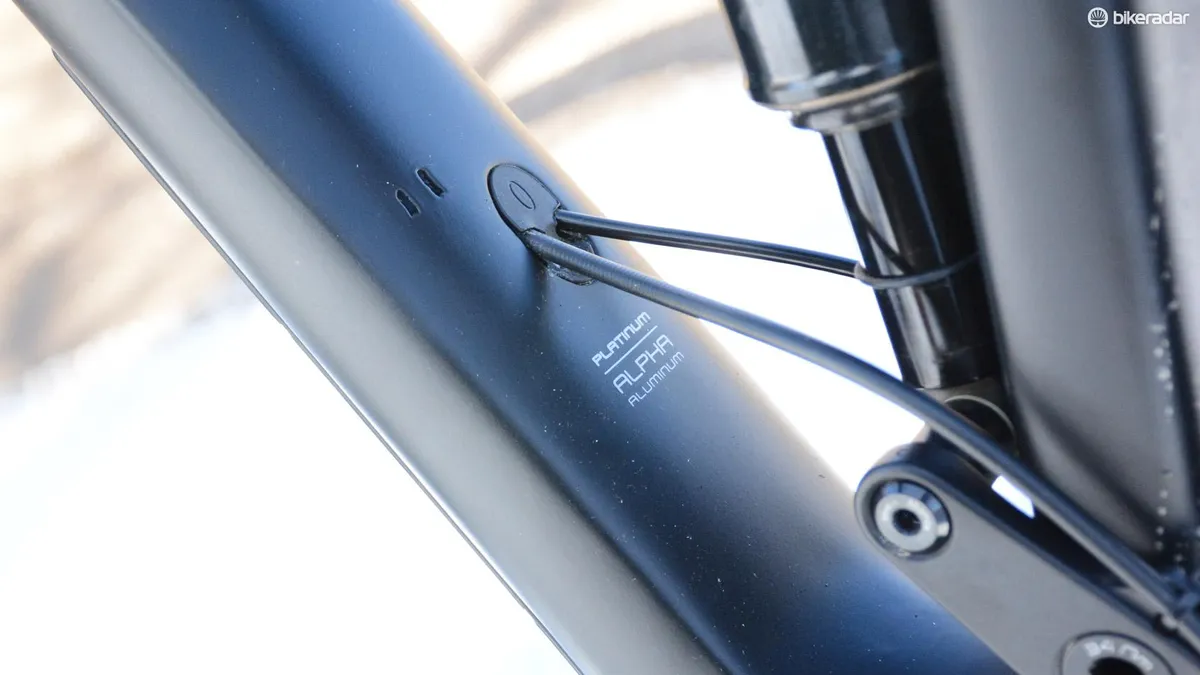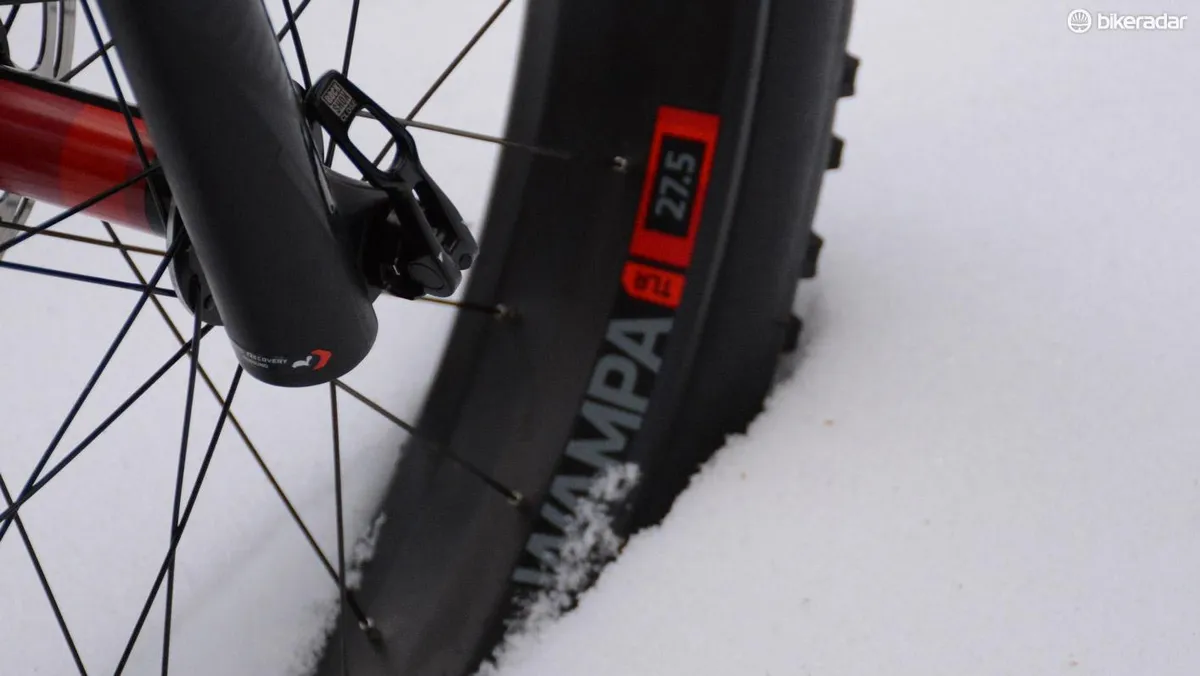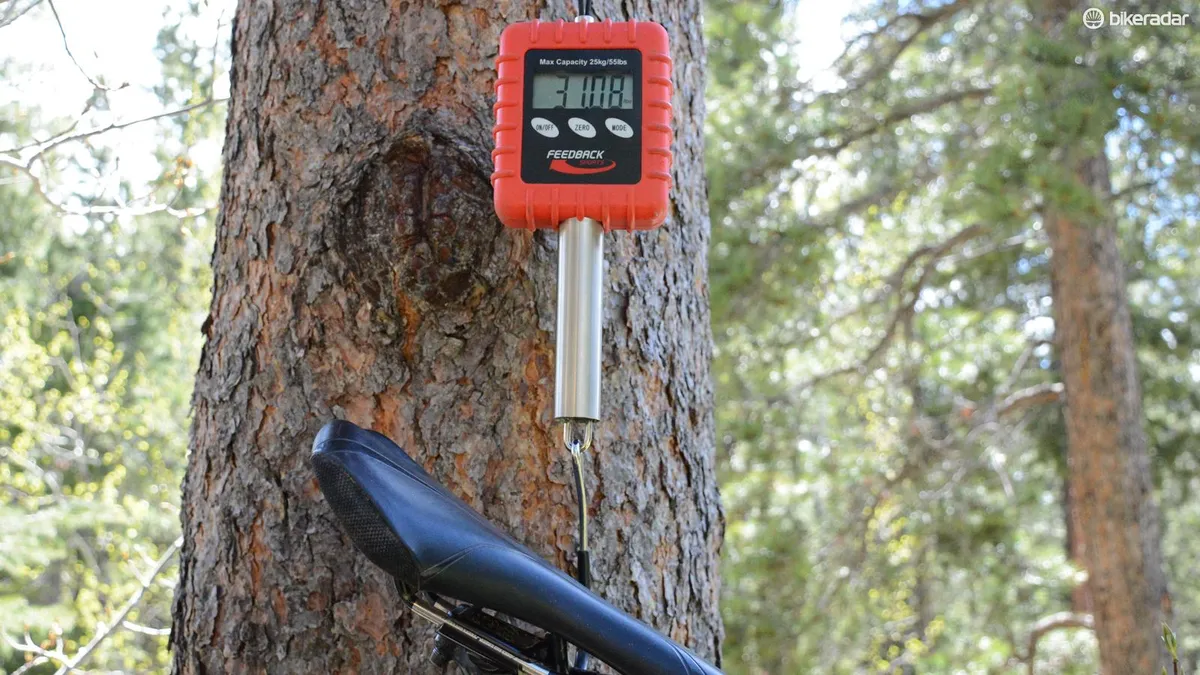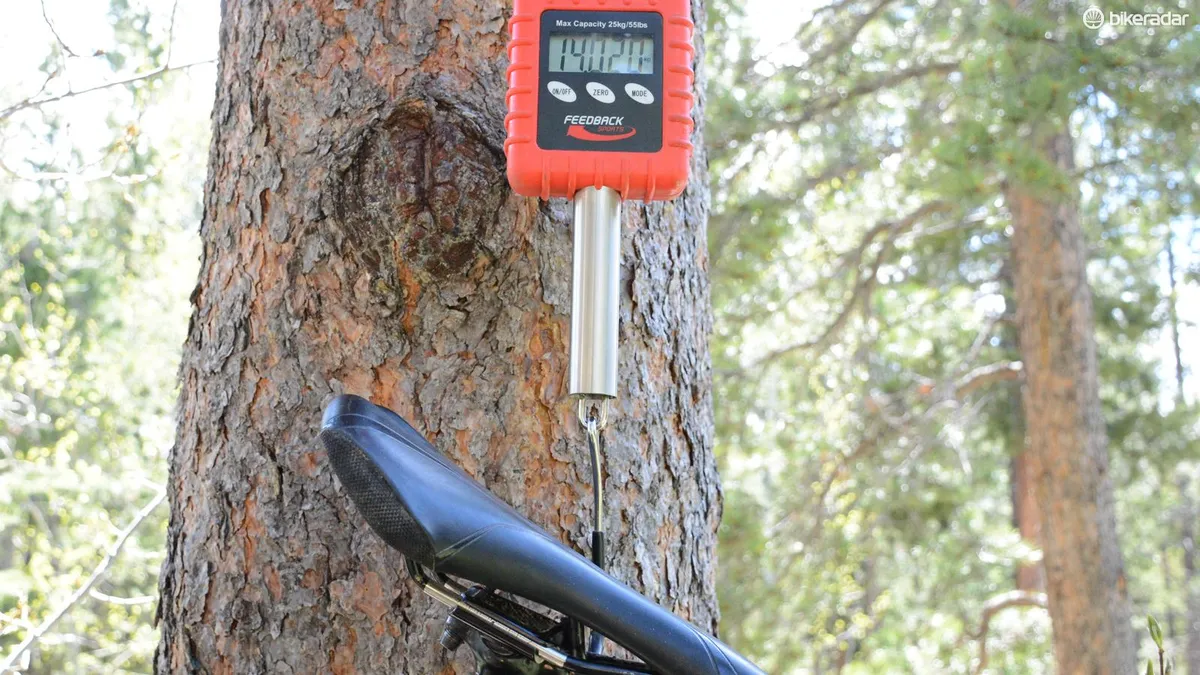No longer just for snow and sand, fat bikes are going the way of regular mountain bikes and branching out within the genre. Trek's Farley EX 9.8 may stretch the boundaries the farthest; it's a full-suspension, carbon fat bike with 27.5 x 3.8in tires, and has the silhouette of a trail bike, the wheel size of an enduro bike and the suspension of an XC bike — so what does this make it?
- Salsa Bucksaw Carbon GX1 review
- Where are fat bikes headed?
- Manitou takes on fat bike forks with the Mastodon

Trek Farley EX 9.8 highlights
- OCLV Mountain carbon frame, aluminum stays
- 120mm rear travel with ABP and Full Floater suspension
- Fox Float RE:aktiv rear shock
- RockShox Bluto RL, 120mm
- Bontrager Wampa Carbon 80 SL rims, tubeless ready
- 150x15 front, 197x12 rear hubs
- Bontrager Hodag 27.5x3.8in tires
- SRAM X01 rear derailleur, X1 shifter
- Race Face Next carbon cranks, 30t narrow/wide ring
- SRAM Guide hydraulic discs
- Weighs 14.06kg / 31lbs, size 19.5in tested
Trek Farley EX 9.8 on the dirt
Riding the Farley EX 9.8 on dirt required the prerequisite learning curve to get used to the massive tires. Even with a high (for a fat bike tire) 9psi up front and 11psi in the rear, the auto steer compared to a regular bike with 2.3in tires is extremely noticeable.
To get any bike to turn, you instinctively push the handlebar grip the opposite direction you want to go to get the bike to lean accordingly. If you don't believe me, ride your bike and push the right grip forward. Which way did the bike tip, then carve?
Now with that out of the way, because fat bike tires have such a huge contact patch, that little nudge to the opposite direction causes a much larger force of direction change. So initially the handling feels wobbly, unstable and kooky. It's akin to feeling like there's water in the wheels pulling you in ways you don't want.

Luckily, it doesn't take long to readjust your timing and inputs. Once my brain became acquainted with the handling, the Farley EX's ability shined through.
Of the three fully-suspended fatties (Salsa Bucksaw, LaMere Dopamine) I had in on test, the Farley EX 9.8 was the most mountain bike-like.
The larger 27.5in wheels, even when encased with narrower 3.8in tires, rolled well and seemed to skim over holes and dips
By sharing the same rear suspension technologies as other Trek's, the rear end performance was similar to the brand's other bikes, which is a good thing. The Full Floater and ABP designs devour bumps and rarely leave any room for want when it comes to tracking.
Pedaling performance is adequate, too. It's not a super snappy ride like a VPP or DW-link bike, but it makes up for it in traction and sucking up the hits.
The traditional mountain bike feeling should also be attributed to having the narrowest yet biggest diameter tires — 27.5 x 3.8in Bontrager Hodags. The rounded profile and small knobs rolled well, but when asked to bite on loose rocks and dirt they typically responded with a slide. Lowering pressures could have achieved more traction and increased contact, however the thin sidewalls needed all the air support they could get to avoid squirming and folding.
The minimal knobbies were also quite slippery on wet roots and rocks.
On a bummer note, I did manage to crack the rear Wampa carbon rim while chasing a very fast friend down a dry, rocky and somewhat technical trail. The wheel did not implode and I was able to limp back out. Trek was quick with a new wheel, too.
I admit it was pilot error to some extent, as I caught the edge of the rim on a jagged rock. Would it have happened to a regular mountain bike rim? That's hard to say for certain. I have contacted Trek and will update when I hear back.
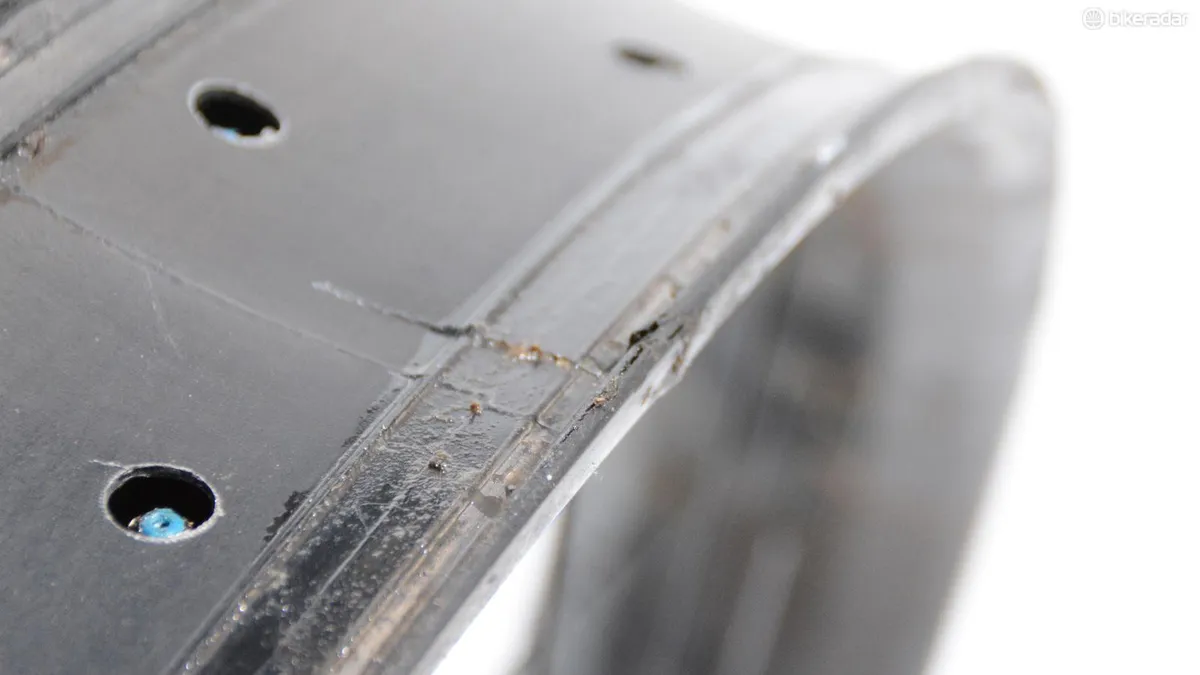
Trek Farley EX 9.8 on the snow
As I wondered in my first look of the Farley EX 9.8, the lack of tire girth did have a somewhat negative impact on snow riding ability.
Where I live, in the Colorado Rockies, the snow has very low moisture content. In layman's terms that means it's just fluffy powder, not heavy wet cement that sets up rock hard. This means that unless the trail gets snowshoed or packed in some other way, riding any fat bike is virtually impossible.
With that in mind, the Farley EX does very well when the conditions allow. The larger 27.5in wheels, even when encased with narrower 3.8in tires, rolled well and seemed to skim over holes and dips better than a mega-wide 26in wheel and tire combo.
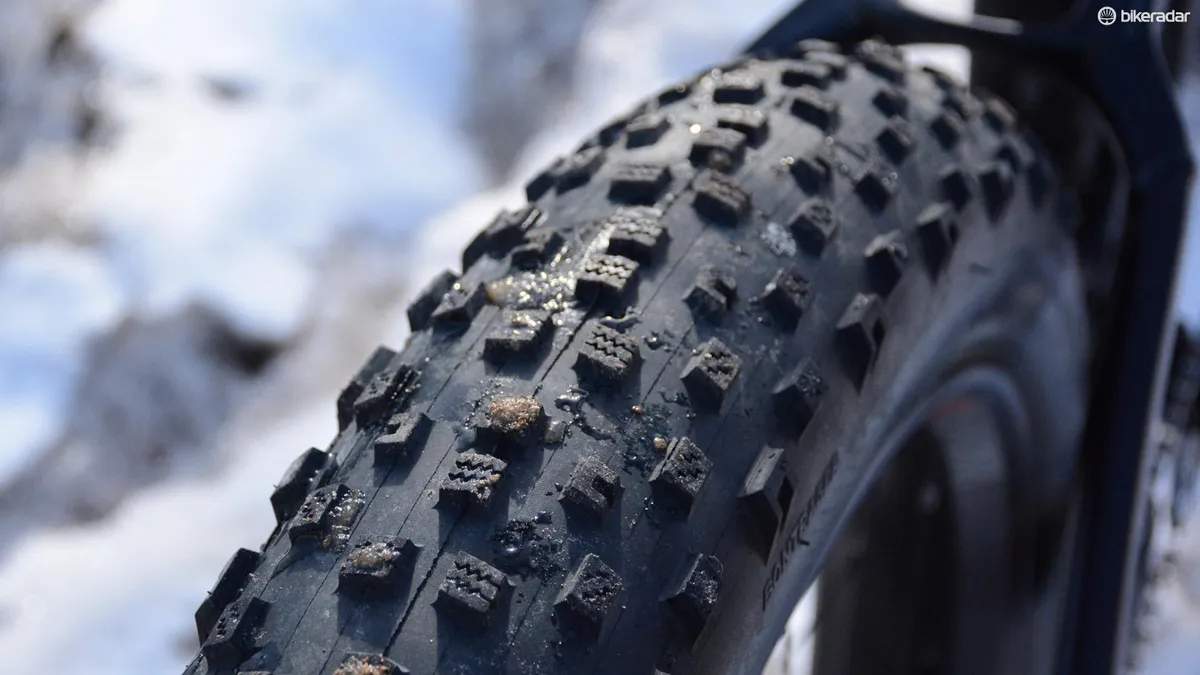
Air pressures were about the same, with roughly 4 to 5psi being the breaking point between getting the knobs to get some purchase and feeling like the tire was going to rip off the rim if I got even mildly sporty.
Outside of the wheels and tires, the rest of the Farley EX 9.8 proved to be up to the task of winter shredding.
Impressively, the Drop Line seatpost performed fault-free even when ridden in negative temperatures.
The all-seasons quiver killer?
Is the Farley EX 9.8 an all-seasons quiver killer? Can it do it all in all the seasons? Yes, sort of.
While it's the most genre-blurring fatty I've ridden, there's no getting around how fat bikes feel when ridden aggressively and the lack of suitable components at the current time.
When my legs were fresh and the trail short, the Farley EX 9.8 lent a sense of invincibility. Hopping between a regular trail bike and the Farley EX 9.8 highlighted how smooth it was and how line choice doesn't really matter on the big tire Trek.
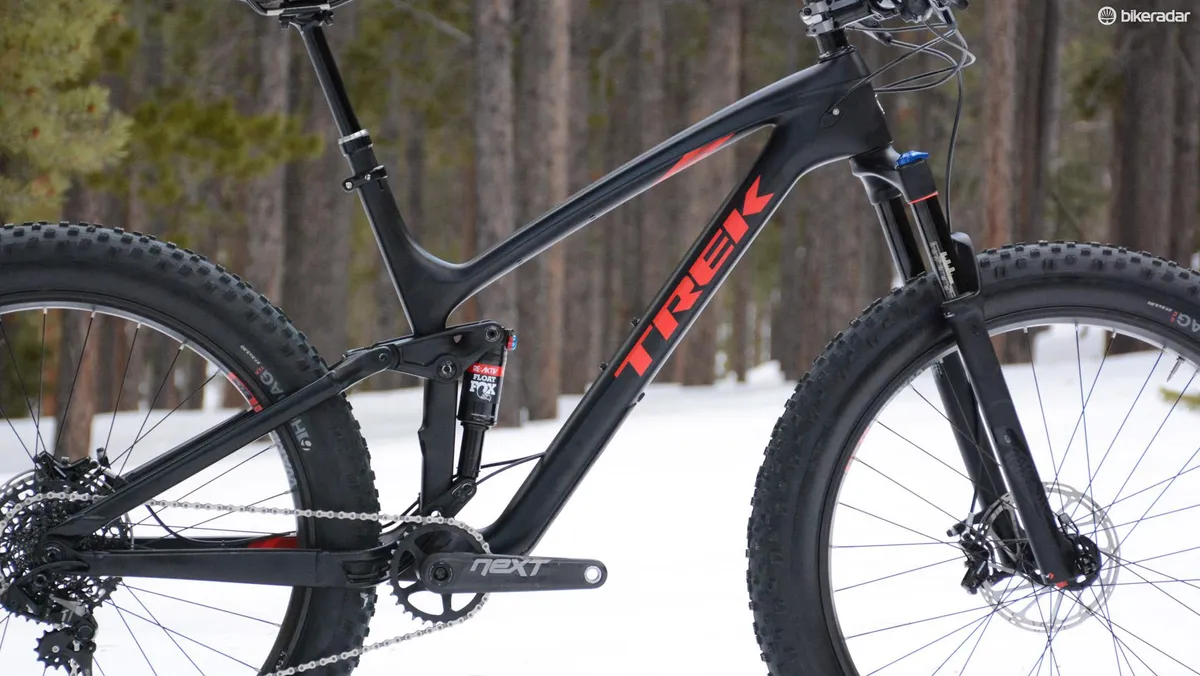
But it also brought to light how heavy those same steam-rolling wheels are any time you try to slash a corner, boost a gap, accelerate from a slow down, or on long rides when it starts to feel like the discs are rubbing.
One surprising thing the Farley EX 9.8 excelled at was wheelies and manuals. I was a bit shocked at how stable the bike was and how easy it was to lean back into the balance point and hold it there.
Bottom line: the right choice if winter riding fun is your main thing
If you're the type of rider who likes a modern, playful mountain bike, yet puts winter and soft conditions riding high on the list, the Farley EX 9.8 should absolutely be on your radar.
Also, if you're looking for enhanced stability and the potential to roll over everything on the trail, the Farley EX 9.8 is worth a demo ride.
It's capable and fun in the summer and on dry trails, but with the extra wheel and tire weight as well as ponderous fat bike handling, it's still closer to a fat bike than it is to a true trail or all-mountain machine.
Trek Farley EX 9.8 pricing and availability
Trek makes two versions: the alloy Farley EX 8 model comes with a modest spec at £2,800 / $3,499 / AU$TBC, while the carbon 9.8 version slots in at £4,500 / $5,499 / AU$TBC.
They are available now from Trek dealers and at trekbikes.com

